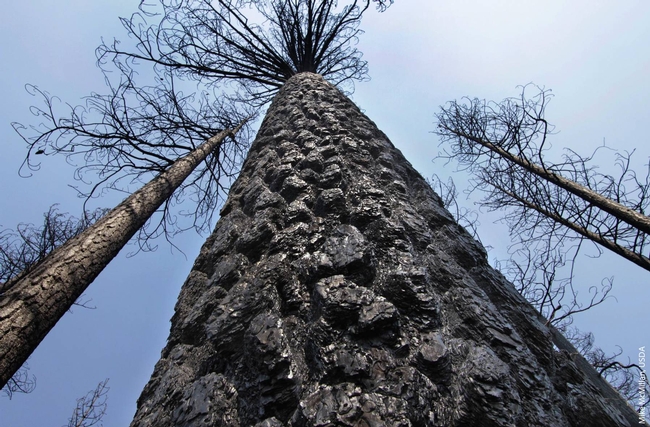
“The loosened soil and ash can move quickly under proper storm conditions,” said Greg Giusti, a UC ANR Cooperative Extension forestry advisor. “Property owners should take immediate action.”
A longstanding practice in the West has been spreading grass seed after a fire, however, the seed is slow to germinate and grow during the cold months that follow fire season.
“Seeding is generally ineffective,” Giusti said. “The seed simply moves and erodes with the soil and ash following an initial rain event.”
After losing a home, homeowners may feel the need to clean up their property. However, leaving woody debris, downed trees and limbs will arrest soil movement. Stumps and standing dead trees also help protect the soil.
“The roots are still in the soil and will help hold it in place,” Giusti said. “As long as they don't pose a danger, trees should be left in place.”
Spreading rice straw or weed-free hay on the ground is another way to protect the soil from erosion. Whole bales of hay can be placed in natural drainages to slow water movement and reduce erosion. Straw wattles – long tubes of compressed straw encased in jute or another material – may be laid out across a slope and secured with stakes.
“I suggest landowners focus on areas of their property where they can have the greatest positive effect,” Giusti said. “You can't cover a whole hillside with straw. People can only do what they can do.”
An initiative to maintain and enhance sustainable natural ecosystems is part of UC Agriculture and Natural Resources Strategic Vision 2025.